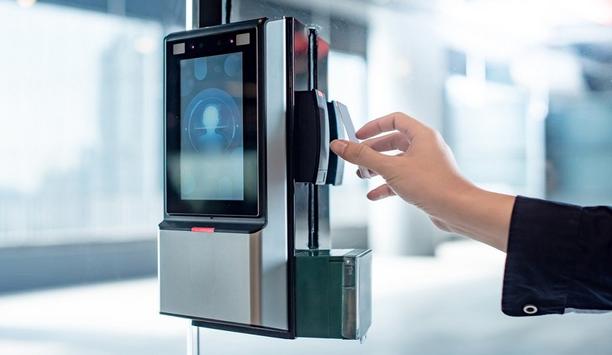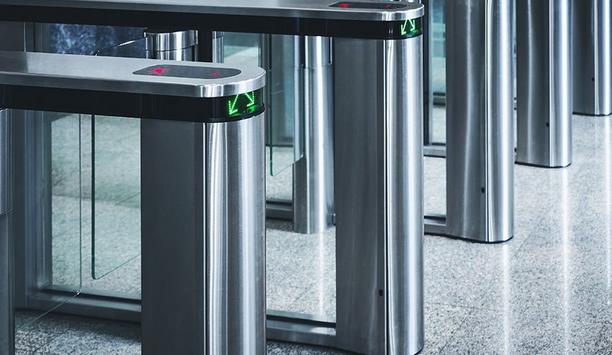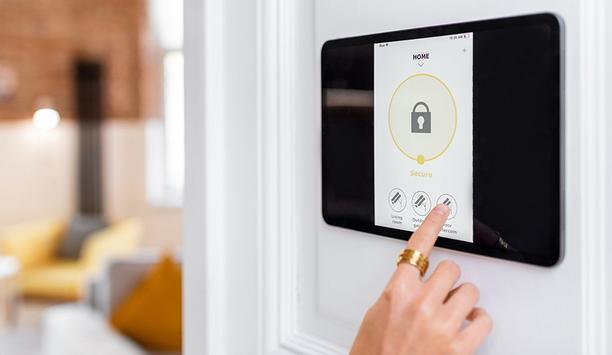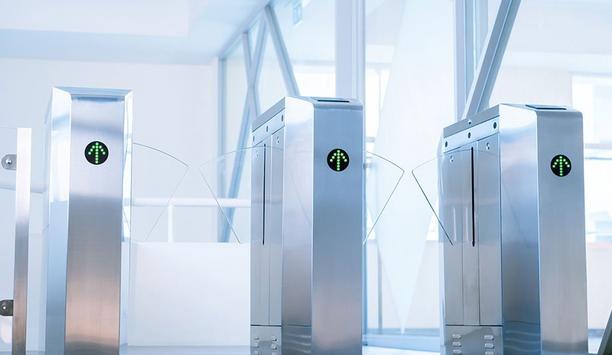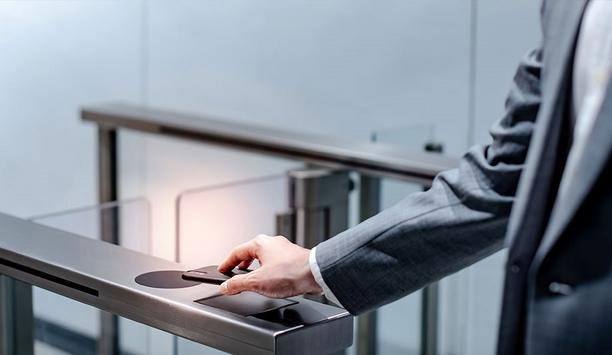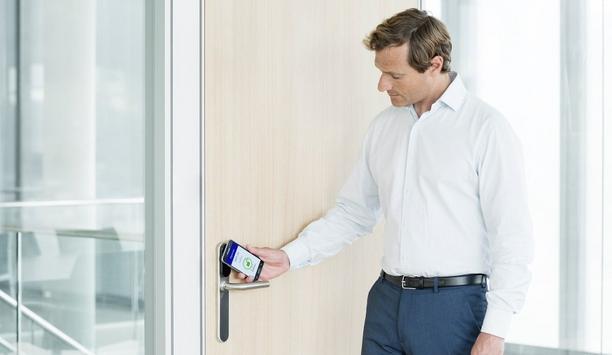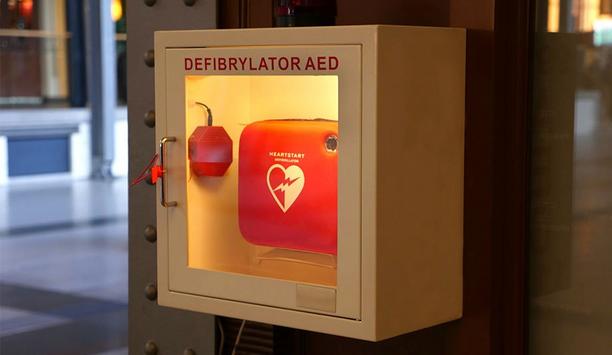Key management - Expert commentary
Amidst the challenges of a prevailing economic downturn, the retail sector finds itself grappling with an unparalleled rise in incidents of shoplifting, theft, and burglaries. The disconcerting scenes witnessed on London’s Oxford Street in August 2023, where crowds gathered, looting as many stores as possible, sent shockwaves across the nation’s retailers. This alarming surge in retail crime has put retailers on high alert, as they contend with a rising tide of security concer...
Global transportation networks are becoming increasingly interconnected, with digital systems playing a crucial role in ensuring the smooth operation of ports and supply chains. However, this reliance on technology can also create vulnerabilities, as demonstrated by the recent ransomware attack on Nagoya Port. As Japan's busiest shipping hub, the port's operations were brought to a standstill for two days, highlighting the potential for significant disruption to national economies and supply cha...
Physical security is essential for a modern production facility, users don’t want just anyone entering the building or accessing secure areas. But what about production machinery? Machine authentication is often a missing link in the security plan for manufacturers. Why machine authentication? Most manufacturers have made significant investments in physical access control (PAC) for production facilities. Few shops currently hand out physical keys to employees or leave the building...
Organisations of all types have made it a priority to better track who is coming and going inside their facilities and on their property. This can include an HVAC technician who needs to be inside a building for several hours to fix a faulty air conditioning unit or a parent who volunteers each week in their child’s school. Technology-based visitor management With considerable advancements in visitor management systems in recent years, organisations are now benefiting from technology-b...
Our recent survey on the state of access control in 2023 showed that HID partners and end users, as well as security and IT professionals, may have varying needs and concerns but nearly all agree on one thing: the need for sustainable solutions. Operational transparency In fact, sustainability was a top issue for almost 90% of our survey respondents. Our end users and their consumers are primarily driving this demand, with ever-increasing numbers asking for operational transparency...
The outlook for advancements in door security solutions is proving to be an extension of the positive trends that have emerged over the past few years and that continue to evolve in exciting new ways. That’s a good sign as we make our way along the road toward an ever-safer world. Improvements in a hybrid workforce Here’s what we’re seeing: More and more companies are rethinking the office space and how electronic access control (EAC) security and data can help better s...
The world around us is full of technological innovation. Smart locks are commonplace in our homes and control access to buildings, but when it comes to industrial locking and access control for equipment cabinetry, options can seem limited. Equally, there’s not enough accessible information to act as a guide. The development of new technologies and cabinet capabilities feels as though it is being held back. But that doesn’t have to be the case. Common problems are seen across the l...
Access control for buildings is nothing new. Early forms of security access for business security systems were introduced in the 1960s, as business owners and managers looked for alternatives to keys, as a result of needing to frequently replace them, when there was a change in personnel. It’s only in recent years that the urgency to implement smarter, more efficient, and convenient forms of access control has increased, in the context of public and private sector digital transformation....
As we enter into 2022, there is still a level of uncertainty in place. It’s unclear what the future holds, as companies around the world still contend with the COVID-19 pandemic. Remote working has been encouraged by most organisations and the move to a hybrid working system has become ‘business as usual’, for the majority of businesses. Some have reduced their office space or done away with their locations altogether. Following best security practices With all this change in...
Schools were never designed and built with social distancing in mind. So it’s perhaps not surprising that as children returned to schools for the autumn term this year, the prospect of outdoor classes and assemblies was mooted in the media and by the Government. Many in the education sector are making the case that, should there be further COVID-19 outbreaks, in the coming months, it would be better to utilise outside space, rather than resort to closing schools. In the COVID-19 era, head...
Today, we live in a technology-obsessed age. Whichever way you look, it’s hard to avoid the increasing number applications, products and solutions that continue to redefine the boundaries of what we previously thought possible. From autonomous vehicles and edge computing to 5G and the Internet of Things, all facets of our lives are continuing to evolve, thanks to an endless stream of differentiated innovations. In this article, we’ll be focusing on the latter of these - the Internet...
Most consumers are enjoying the convenience brought by electronic locks. With the existence of electronic locks, people no longer need to be restricted by keys. There are a variety of unlocking methods and more convenient remote control unlocking options. Suppose, you are going on vacation, and with the presence of an electronic lock, you can easily enter your house with your babysitter, without a spare key. Of course, not only smart homes, but also some infrastructure and commercial buildings...
Household adoption of smart home systems currently sits at 12.1% and is set to grow to 21.4% by 2025, expanding the market from US$ 78.3 billion to US$ 135 billion, in the same period. Although closely linked to the growth of connectivity technologies, including 5G, tech-savvy consumers are also recognising the benefits of next-generation security systems, to protect and secure their domestic lives. Biometric technologies are already commonplace in our smartphones, PCs and payment cards, enhan...
In the past decade, we’ve seen an unfortunate increase in gun-related incidents on school campuses, making security and policy efforts a top priority for educational facilities nationwide. While the causes for this increase are hotly debated in and around the education community, the facts remain that specific steps can be taken to mitigate risks. To tackle this issue, officials from campus stakeholders, law enforcement officials, architects, and security personnel, have met to find solut...
For many businesses and organisations, the term 'authentication' is synonymous with 'password' or 'multi-factor authentication (MFA)’. However, because today's business ecosystem is complex and stretches across distributed workforces with work from home, BYOD policies, and multiple cloud environments, it is very challenging to efficiently recognise and authenticate identities of people, processes, and devices throughout the enterprise using traditional methods. The problem with passwords...
In daily work and life, various locks have always played the role of protecting asset safety. In different usage scenarios, the most appropriate lock must be selected to maximise benefits. In the past applications, the difficulties encountered by managers are as follows. Unlocking authority is difficult to control, unclear access records, emergency unlocking, and troublesome upgrade and installation. Through the following points, how the key-centric access management system solves such problems...
Steven Kenny, Axis Communications, looks at the benefits of physical access control systems within smart environments, and how knowledge gaps and dated methods can inhibit adoption. Physical security is becoming more dynamic and more interconnected, as it evolves. Today’s modern access control solutions are about so much more than simply opening doors, with digitalisation bringing multiple business benefits, which would simply not be possible using traditional models. Digital transformat...
When we talk about security, people are often quick to jump to conclusions and picture bouncers, heavy steel doors and alarms that go off as soon as a door is opened. Access control is in fact one of the most common and least invasive methods of adding extra security to a home, communal or business premises – controlling who is able to enter a space based on the use of entry codes, key fobs, and/or access cards. Communal flats and office blocks are where access control is often an importa...
The 2020s will be a wireless decade in access control, says Russell Wagstaff from ASSA ABLOY Opening Solutions EMEA. He examines the trends data, and looks beyond mobile keys to brand new security roles for the smartphone. The benefits of wire-free electronic access control are well rehearsed. They are also more relevant than ever. A wireless solution gives facility managers deeper, more flexible control over who should have access, where and when, because installing, operating and integrating...
Automatic gates remain an increasingly popular security choice for family homes, business premises or public buildings – anywhere that full control over access is needed. While there is much to consider for installers when advising clients on the right solution for their property, from the size, weight and cost of a gate system, it’s useful to be aware of the latest developments in the market, as this can help to find the right option to fit their needs. The need for speed Gates c...
What would you do if, tomorrow morning, you opened your work laptop to see a ransomware demand? “Oops: Want Your Files Back? Here’s How to Pay”. It’s a pretty terrifying prospect. In that moment, IT and senior management are rushing to restore previous versions via advanced cybersecurity – or if they can’t, they’re considering paying up. As for the rest of your company’s employees, their online training modules in how to prevent a cyber-attack or...
A defibrillator can save the life of a person suffering from cardiac arrest – but it is most effective when used in the first few minutes of the patient collapsing. Studies have shown that a shock given within the first three minutes provides the best chance of survival and even one minute of further delay can substantially lower the chances of recovering. Public Access Defibrillators (PADs) were created to allow untrained members of the public to deliver life-saving treatment in those pr...
Across the globe, healthcare providers and facilities from care homes to hospitals and private clinics are working around the clock to reduce the risk to their staff and reduce the spread within their facilities. There are increasing reports in the UK that the virus has devastating effects in care homes, with fears that the US will be next in tow. The impacts on healthcare staff have also been stark with absence levels growing. In some health bodies across the UK up to almost 20% of their staff...
How can security system integrators not just survive but thrive in today’s IT-led market? The key seems to be in training. As increasingly more clients look to integrate access control with IT environments, they want integrators with the specialist skills to achieve this. For integrators that don’t invest in training, the risk is being left behind. Because many security system integrators aren’t providing specialist IT support, manufacturers are now offering services to make...
We live in an information and data-led world, and cybersecurity must remain top-of-mind for any organisation looking to both protect business operation critical assets. Businesses without proper cyber measures allow themselves to be at risk from a huge list of threats - from cybercriminals conducting targeted spear-phishing campaigns - like the 2018 Moscow World Cup vacation rental scam, to nation-state actors looking to collect intelligence for decision makers - no organisation is safe from in...
The past decade has seen unprecedented growth in data creation and management. The products and services that consumers use every day – and the systems businesses, large and small, rely on – all revolve around data. The increasing frequency of high-profile data breaches and hacks should be alarming to anyone, and there’s a danger data security could worsen in the coming years. According to DataAge 2025, a report by IDC and Seagate, by 2025, almost 90% of all data created in t...
Considering how much the modern smartphone has become a common everyday tool and cultural icon, it’s hard to believe it has only been with us for a relatively short space of time. The first Apple iPhone was launched in 2007 and yet in a little over a decade the smartphone has become as essential as our keys or wallet. From its conception as a multi-faceted communications device, it has morphed into something far more integrated in our daily lives. Services such as Apple Pay, Android Pay a...
When asked about what the market should be thinking about in 2018, I am left offering an answer that serves as an urgent call to action: prepare yourself for change! The security industry is soon likely to see a dramatic shift from the traditional segmentation of commercial and residential security. Smart phones, mobile technologies, cloud computing, and having everything provided ‘as a service’ in peoples’ lives means users of buildings have a new set of expectations. In many...
Throughout the UK there are many examples of smart city transformation, with key industries including transport, energy, water and waste becoming increasingly ‘smart’. A smart city is a one that uses information and communication technologies to increase operational efficiency, share information with the public and improve both the quality of government services and resident welfare. Smart access is an important step forward in providing technologically advanced security manag...
In 2017, SALTO Systems led the market with increased emphasis on two growing sectors within access control: Mobile technology and cloud solutions. Strengthening market positions Mobile access control applications are now a must across all security verticals. The hospitality sector, for example, is quickly seeing smartphones replacing room keys and check-in lines with mobile apps like SALTO’s JustIN Mobile. This technology replaces the need for an access card by securely sending a mobile...
The ultimate guide to mastering key control
DownloadUsing artificial intelligence (AI) to automate physical security systems
DownloadA modern guide to data loss prevention
Download7 proven solutions for law enforcement key control and asset management
DownloadThe truth behind 9 mobile access myths
Download




